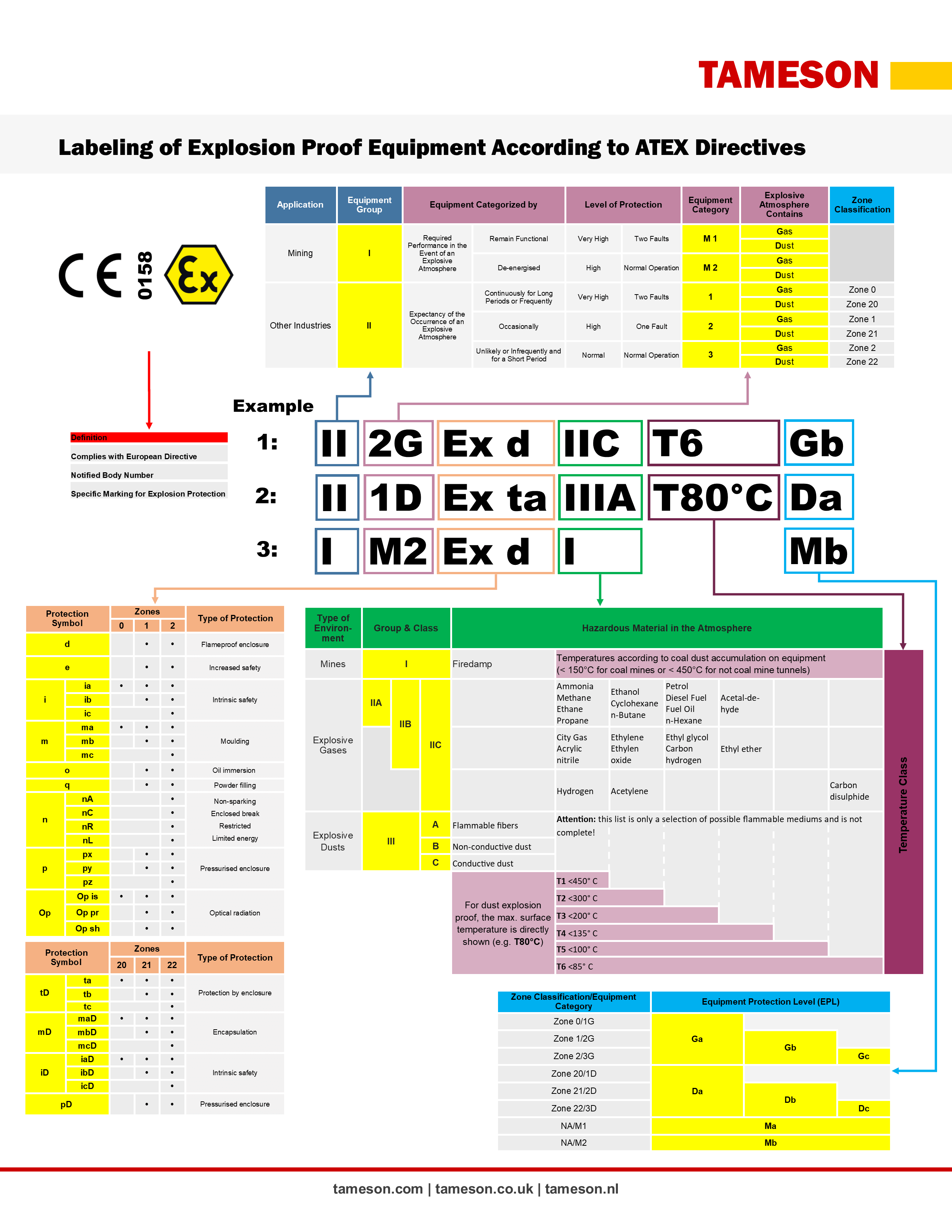ATEX Labeling
Operating in environments where flammable gases, vapors, mists, or dusts are present necessitates particular safety precautions. ATEX labeling serves as a technical identification system that provides information on the explosion protection characteristics of equipment. This label aids in the safe selection and utilization of equipment in potentially explosive settings. Every ATEX certified product must display an ATEX label detailing the standards it complies with. The downloadable document below outlines the labeling structure with examples to facilitate a clear understanding of ATEX labeling.
Auto-ignition temperatures for gasses and dusts
The tables below are a non-exhaustive list of common gases and dusts with their temperature classes and auto-ignition temperatures.
| Gas Group | Temperature Class | |||||
| T1 | T2 | T3 | T4 | T6 | ||
| I | Methane | |||||
| IIA | Acetone | Ethanol | Diesel Fuel | Acetaldehyde | Ethyl Nitrite | |
| Methane | Cyclohexane | Aircraft Fuel | Ethyl Ether | |||
| Ethane | Propanol 2 | Fuel Oil | ||||
| Benzene | N-Butyl Alcohol | N-Hexane | ||||
| Methanol | N-Butane | Heptane | ||||
| Toluene | Kerosene | |||||
| Acetic Acid | Petrol | |||||
| Ammonia | ||||||
| Propane | ||||||
| Methylene Chloride | ||||||
| Carbon Monoxide | ||||||
| IIB | Coal Gas | Ethylene | Ethylene Glycol | Ethyl Methyl Ether | ||
| City Gas | Ethylene Oxide | Hydrogen Sulphide | ||||
| Acylic Nitrile | Propanol 1 | Tetrahydofuran | ||||
| Methyl Ethyl Ketone | ||||||
| Carbon Hydrogen | ||||||
| IIC | Hydrogen | Acetylene | Carbon Disulphide | |||
| Ignition Temperatures for Common Flammable Dusts and Fibers | ||
| Material | Ignition Temperature | |
| Cloud | Layer | |
| Coal Dust | 380˚C | 225˚C |
| Polythene | 420˚C | (melts) |
| Methyl Cellulose | 420˚C | 320˚C |
| Starch | 460˚C | 435˚C |
| Flour | 490˚C | 340˚C |
| Sugar | 490˚C | 460˚C |
| Grain Dust | 510˚C | 300˚C |
| Phenolic Resin | 530˚C | > 450˚C |
| Aluminum | 590˚C | > 450˚C |
| PVC | 700˚C | > 450˚C |
| Soot | 810˚C | 570˚C |





